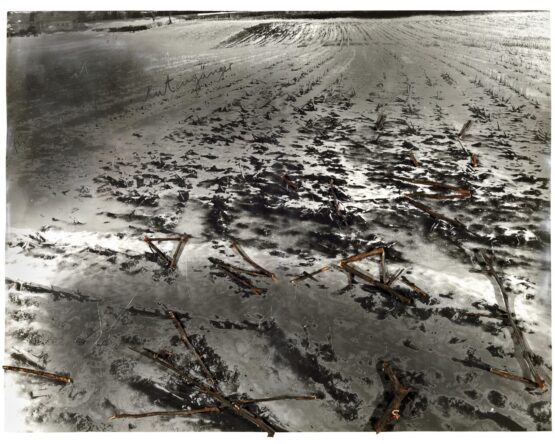
Galerie Thomas
Tuerkenstrasse 16
80333 Munich
Germany
Opening hours
Monday – Friday: 9am – 6pm
Saturday: 11am – 5pm
In the work ‘Für O.K. die Windsbraut’ (For O.K.The Bride of the Wind), Anselm Kiefer refers to the most famous painting of Oskar Kokoschka, made clear by his initials in the title. ‘The Bride of the Wind’ from 1914 portrays Kokoschka and his lover Alma Mahler-Werfel, who had left the painter shortly before. The couple shown in Kokoschka’s painting, still united in the storm, stands facing the changes evoked by Alma Mahler’s personality, but the painting can also be interpreted as a premonition of the looming world war. It is this ambivalence that elicited Kiefer’s interest in the theme: he portrays Alma Mahler in the form of the leaden dress at the centre of the work; a symbol that appears quite often in Kiefer’s work and can personify various female figures. Most often it is the mythical Lilith, the archetype of the strong, matriarchal woman, but it can also stand proxy for Medea, Goethe’s Margarethe or Sulamith from Paul Celan’s ‘Death Fugue’. The main figure also appears as a metaphor for the fateful power of the female in Kiefer’s paraphrasing of ‘The Bride of the Wind’.
Such cross-references through history, literature, myth and art history, typical of Kiefer, can also be seen in the current exhibition of the Franz Marc Museum in Kochel. The stimulating show with the title ‘Opus Magnum’ brings together 23 display cases and six large-format photographs, in which Kiefer has summarised the broad spectrum of his themes, motifs and symbols. The museum in Kochel juxtaposes these with short texts by contemporary authors and offers the viewer the opportunity to approach the artistic cosmos of Anselm Kiefer through association.